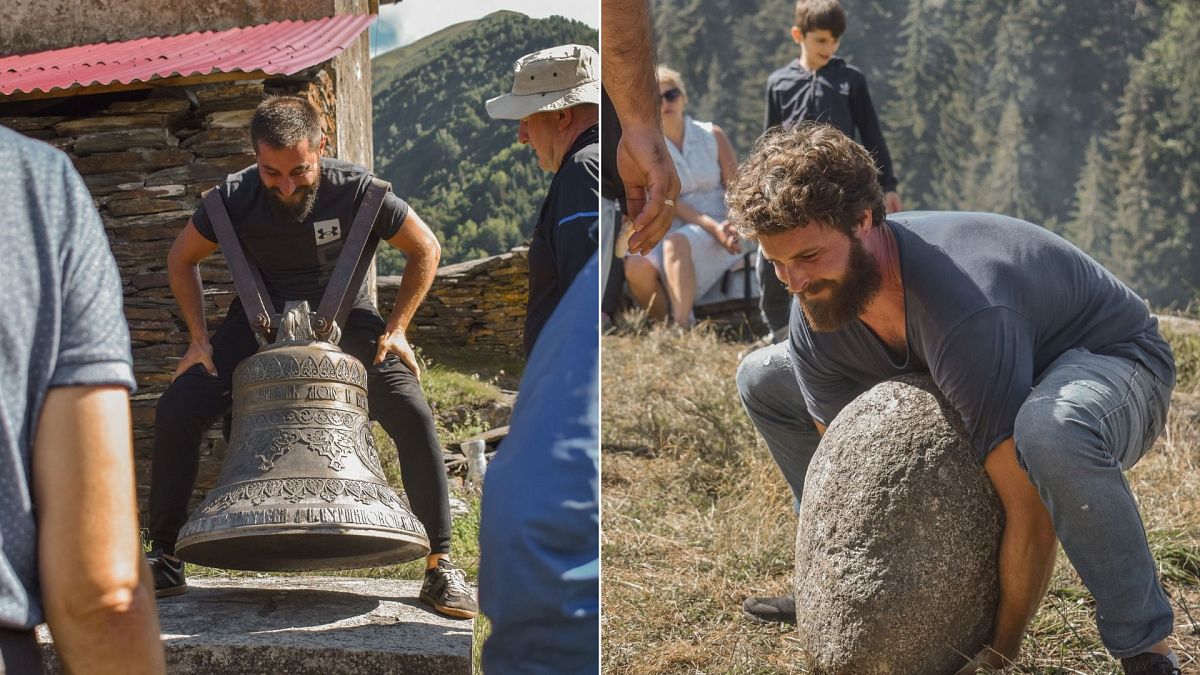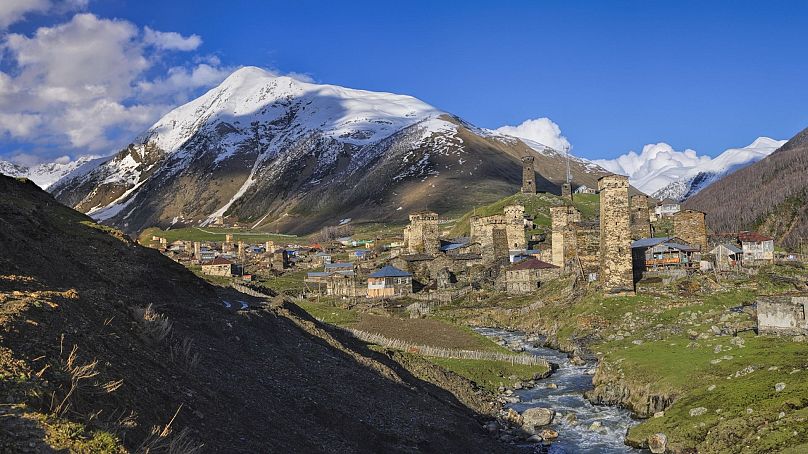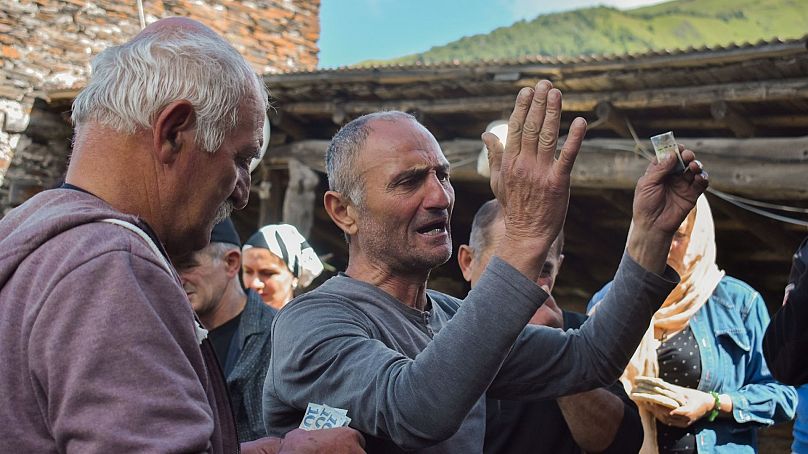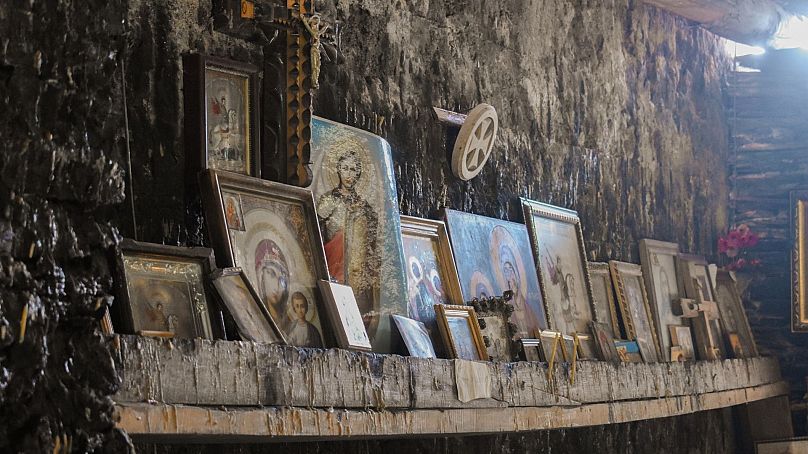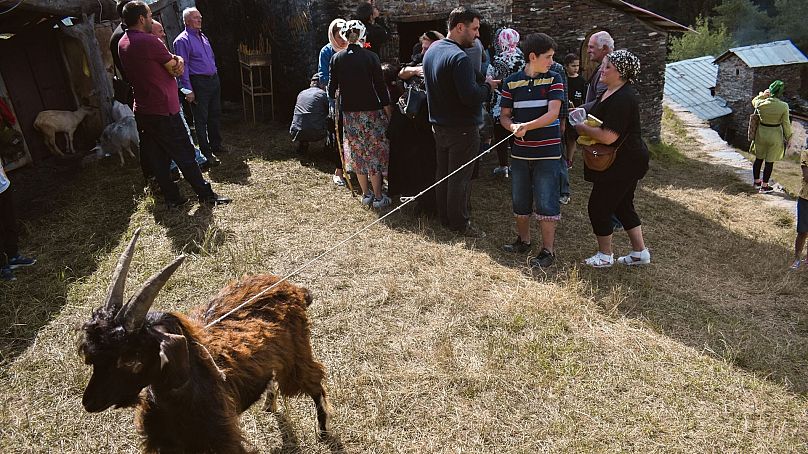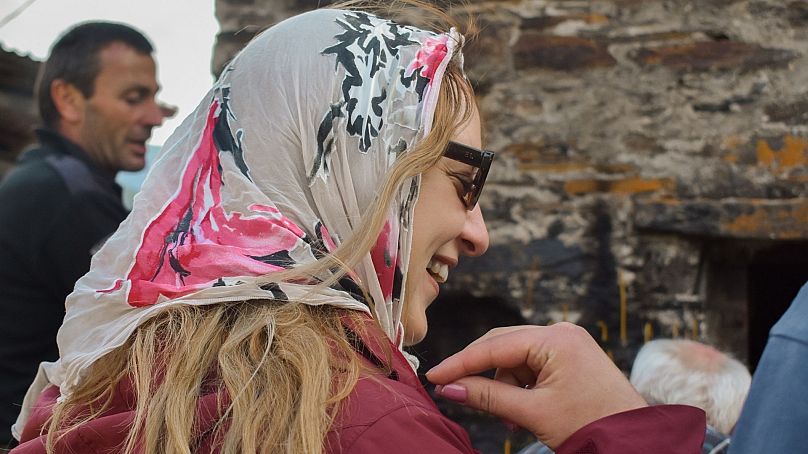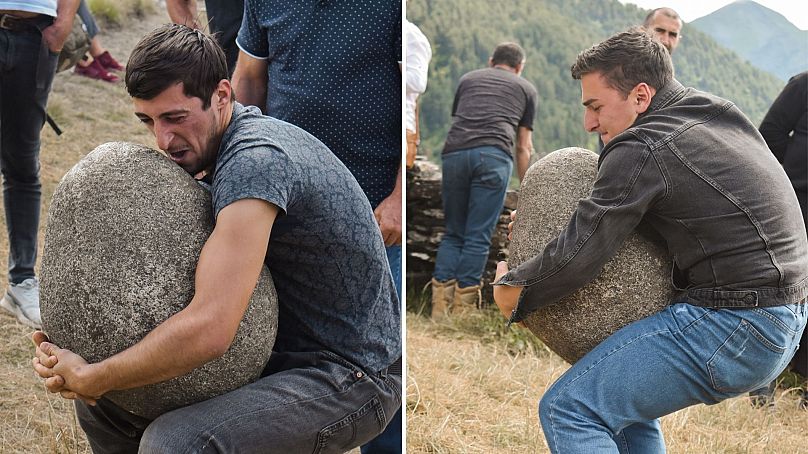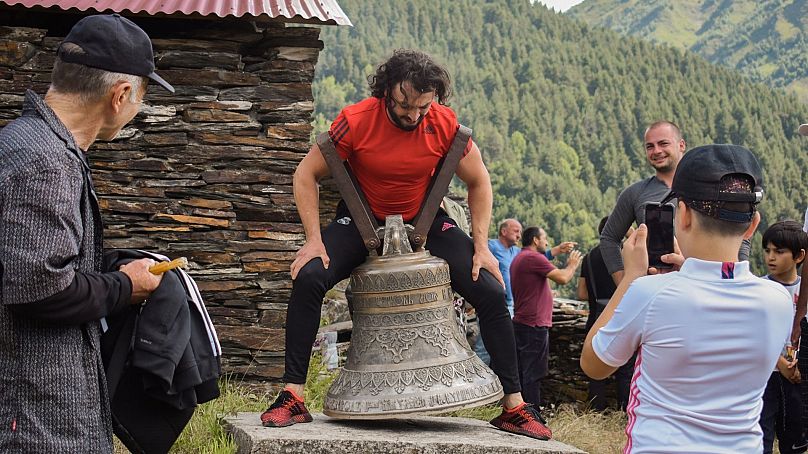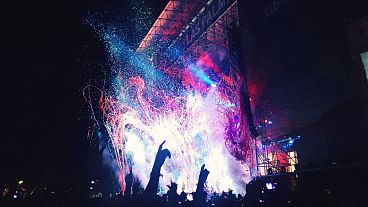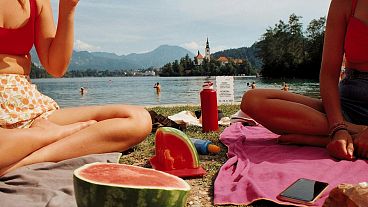A look at religious rituals and some bizarre sporting traditions in Georgia's Svaneti region.
Few places are as untamed as Georgia’s Svaneti region where old and new gods still play a huge role in local life.
Strung together by a series of remote villages deep in the Caucasus mountains, Georgia’s highland region of Svaneti is steeped in folklore, ancient history and breathtaking scenery unlike anywhere else in the country. It has led to a distinct identity shaped by isolation, much of which is still preserved in amber with hundreds of khoshkebi (medieval stone towers) still standing, an archaic local tongue, and a reputation as the nation’s fiercest warriors.
The seclusion of the region also means that religious folk traditions still prevail here with sacrificial bones adorning churches and ancient rites still very much practiced. Few times is it ever as apparent as the annual Kvirikoba festival.
A festival steeped in folklore
Each year, precisely 100 days after Easter, clusters of orthodox devotees from Svaneti and beyond wake at dawn to make the steep trek up to St. Kvirike, an 11th century church sitting high atop a hill in the wilds of Svaneti’s Mestia municipality.
Among the crowd you’ll find overeager children hopping along the exposed roots, determined elderly women trudging on, families with locked hands and plenty of burly, stern-faced men tugging at goats with makeshift bridles of rope strung around the horns.
Their vertical pilgrimage marks Kvirikoba, a religious holiday dedicated to the memory of Ivlite and Kvirike, a Christian mother and son who were tortured, martyred and later canonised for their steadfast beliefs. And it’s at St. Kvirike Church in the tiny village of Kala, where the holiday is revered the most - and not just because of its 910-year-old frescoes and stunning hill top location.
St. Kvirike Church, also known as Lagurka (the holy place) in local Svan, is where you’ll find the 1,000+ year old, ornate Shaliani icon, a relic of Christ regarded by many to have “great miraculous power and healing abilities.” Spending most of its time behind glass in Mestia’s famous Ethnographic Museum, once a year, it’s lent to St. Kvirike Church for Kvirikoba.
And while Kvirikoba is undoubtedly a Christian holiday in today’s world, Manana Khizanishvili, curator of Collections of History and Ethnography at the Georgian National Museum in Tbilisi, contends that “its roots can be traced back much farther than that of Kvirike and Ivlite”.
In ancient Svan times, this day was used for rituals of fertility and abundant harvest for the Svan god Kviria. “It’s very likely that the modern holiday is an adaptation of the pagan Svan’s fertility ritual,” says the museum.
Today’s celebrations are proof that old habits die hard - more than a thousand years after a reluctant conversion to Christianity, Svans still perform sacrificial rites and retain a strong belief in pre-Christian superstitions.
Wishes, tithes and sacrifice
At the top, pilgrims make their way to the face of the church where the day’s ritual begins. Slender golden twigs of beeswax and twine are on offer to make wishes by lighting them and adhering them to the stone wall. Meanwhile, worshippers flock together looking to lock in divine favour with offerings - hopefully resulting in the birth of a son in their family.
At the helm of it all is Elguja Khardziani, an intense man who belts out prayers and blessings for each believer with an offering. Some with cash tithes, jewellery, religious icons and other valuables - but a crowd favourite by far, is lemziri - a saucer sized ritual bread baked by the plenty in preparation for the special day.
The largest, and most notable offerings however, are the livestock that local families have raised specifically for the holy occasion.
Erratically steered by the horns, countless goats are led to the makeshift pulpit to be blessed before they’ll be sacrificed as an offering to god, old and new, later in the evening.
Healing from a rare illness
To Nino Andriasova, a Tbilisian and devout believer in the power of Kvirikoba, this is the time of year she looks forward to the most. She explains that “each year on Kvirikoba, I am reborn,” and attributes her health to the miracle of Kvirikoba saying that some years back, a rare illness brought her to the brink of death and left her with less than 5% chance of survival.
“They were preparing my mother for the death of her daughter. I prayed for ten days straight. I never stopped. I asked God - I promised God - that if he would let me live, I would make the climb to St. Kvirike Church and perform a sacrifice in his honour. After a month and a half in the hospital, I was released. I kept my promise and on Kvirikoba made a sacrifice on the hill of this church for God.”
“This church and this holiday are miraculous and all-powerful. I believe it deep in my heart,” she says.
Another festival goer, Irakli Gurchiani from Etseri, a small village situated near the Enguri Dam, says that “even after 20 consecutive years worshipping and celebrating at Kvirikoba, I am still immensely fascinated and moved by the holiness of this day.”
To Nino, Irakli, and so many others alike, Kvirikoba is a day of mysterious divine intervention.
Bell tolling and boulder tossing
Rather than a strict order of events, the afternoon consists of various traditions taking place simultaneously. On the other side of the church, lies an enormous bell where spectators huddle ‘round. The bell isn't just for show, either. This megalith chime weighing nearly 300 pounds serves as a competition of strength with the winning prize being a lamb or goat of the victor’s choosing.
Men of all shapes and sizes, from all corners of Svaneti and beyond, step up to the challenge with most resulting in a beet-red face, wobbly knees and little budge from the bell.
Parallel to the bell are massive scattered rocks used for sajildao qvis atseva, or boulder tossing. Competitors need to lug the impossibly large, heavy boulder up and over their shoulder and toss it behind their back. Think of it as a form of shot put.
The victors are few and far between and of course, gain ultimate bragging rights. To 17-year-old Mose from Sakdari village in Lower Svaneti’s Lentekhi, continuing the ancient tradition of sajildao qvis atseva, is his “proudest honour”.
He continues, “It may look like just a simple game, but it is a continuation of our ancestors and a way to prove our strength to God and our village.” Mose describes his strength as a pillar of what it means to be Svan, and how it contributes to the history of the region.
“We are resilient. We are fearless. We are mountain people who live by the laws of nature, who understand the wild-ness that is our homeland. It’s why we have never been conquered by any of Georgia’s enemies.”
It’s around this time that an enormous feast would usually be served to all. Manana explains that traditionally, a special type of bull known as uiskhi, is slaughtered at the start of the first prayer and liturgy before being cooked in an enormous cauldron throughout the celebration. When served, it’s accompanied with traditional folk song and dance native to the region.
This year however, Kvirikoba looks a bit different.
With so few people in attendance due to the pandemic and recent flooding that rendered the village inaccessible by most, there aren’t enough people to satisfy a traditional feast. However, plenty of lemziri are generously doled out instead.
